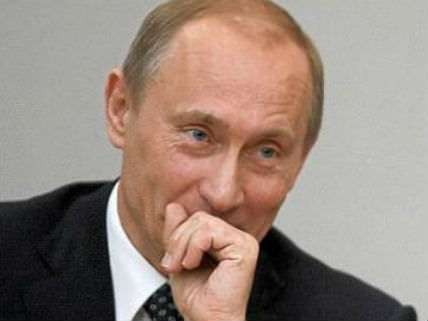Russia Pledges Essentially Zero To Global Greenhouse Gas Goals
Russia's intended nationally determined contribution by 2030 is ... nothing

Yesterday, the Obama administration issued its proposals for the country's intended nationally determined contributions (INDC) to the global effort to prevent dangerous anthropogenic interference with the world's climate under the 1992 United Nations Framework Convention on Climate Change (UNFCCC). Obama pledged that the U.S. would cut its greenhouse gas emissions by up to 28 percent by 2025 with the goal of reducing them by 80 percent by 2050.
Every country is supposed to issue their INDC pledges before the next big U.N. climate change meeting in Paris this coming December. The Russians have just issued their INDC and it's kind of amusing. The Russians pledge to aim at:
Limiting anthropogenic greenhouse gases in Russia to 70-75% of 1990 levels by the year 2030 might be a long-term indicator, subject to the maximum possible account of absorbing capacity of forests.
Why amusing? If I am reading the data right, Russian emssions are already well below the 70 percent mark. According to U.N. data, total Russian greenhouse gas emissions amounted to about 3.4 billion metric tons in 1990. In the wake of the economic turmoil occasioned by the collapse of the Soviet Union, emissions dropped to 2 billion metric tons in 2000 and subsequently rose to 2.3 billion tons in 2012. As the new INDC pledge makes clear that Russians want to count the capacity of that country's extensive forests to absorb carbon dioxide as an offset to greenhouse gas emissions.
In climate-speak the effects of forests on the fates of greenhouse gas emissions is called LULUCF (land use, land use changes and forests). Again parsing the U.N. data, one finds that in 1990, Russia was cutting its forests and so emitting extra greenhouse gases for a total of 3.5 billion metric tons in 1990. Forest regrowth by 2000 was absorbing 400 million tons of carbon dioxide, reducing Russian overall emissions to just 1.6 billion tons. By 2012, forests were removing 500 million tons, thus reducing emissions to 1.8 million tons.
So assuming that Russians don't count the greenhouse gas absorption of their trees, current emissions already 32 percent lower than they were in 1990. If they count their trees as they seem to want to do in the new INDC, overall emissions are currently 50 percent below their 1990 levels.
So one way to interpret the Russian INDC is that the country has no intention of reducing its greenhouse gas emissions and, in fact, has left plenty of space for it to increase its overall greenhouse gas emissions by 2030. Very funny, no?


Show Comments (22)